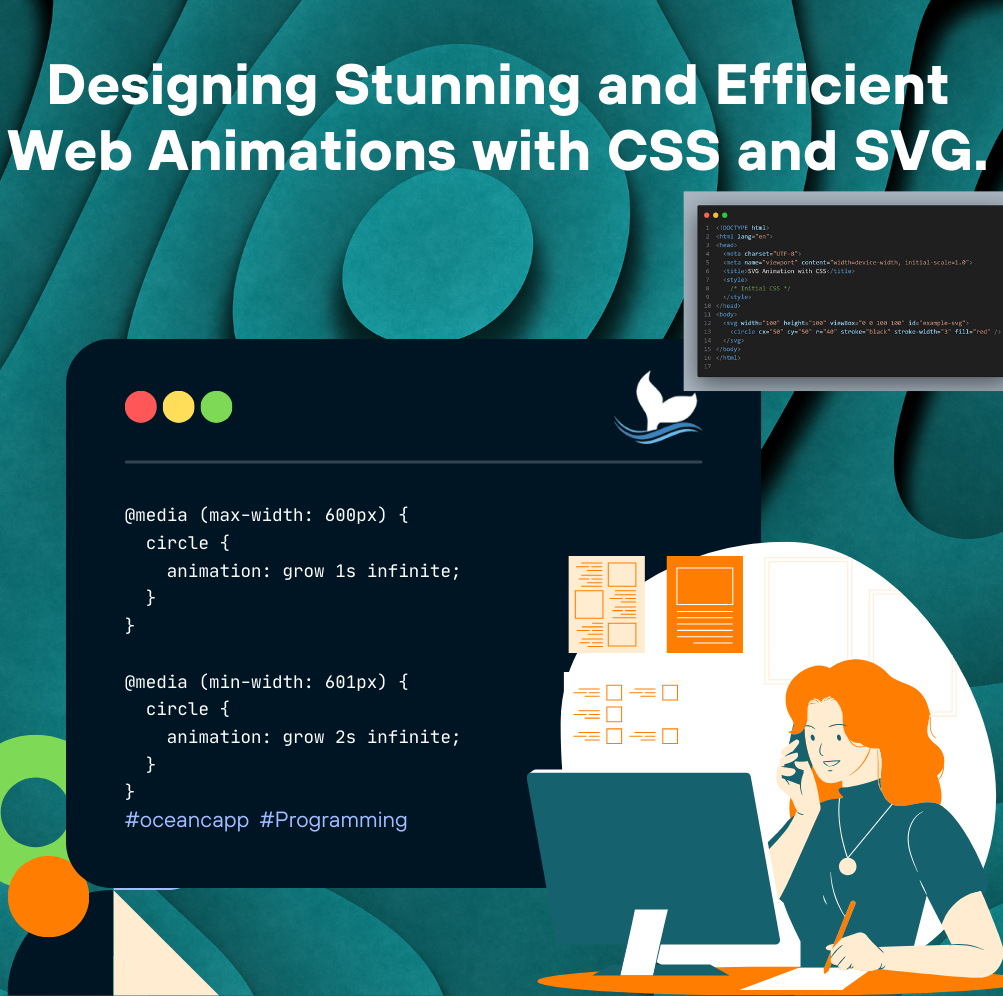
Web Animations with CSS & SVG
Posted on: June 26, 2024
Web animations significantly enhance user experience by adding interactivity and visual appeal to websites.Leveraging Scalable Vector Graphics (SVG) with Cascading Style Sheets (CSS) is an efficient way to achieve beautiful, lightweight, and performant animations. SVGs, described in XML, are vector-based and can be scaled to any size without losing quality, making them ideal for responsive design. Using CSS to style and animate SVGs offers several benefits: it maintains clean code by separating style definitions from content, enhances interactivity when combined with JavaScript, improves performance with hardware-accelerated animations, and provides flexibility through media queries and CSS variables for responsive animations. To get started, embed an SVG directly into HTML. For example, a simple SVG with a circle can be styled and animated using CSS. Changing the circle's fill color or animating its size and color can be achieved with CSS properties and keyframes. More complex animations can be created by combining multiple transformations, such as translating and scaling a group of SVG elements. Additionally, media queries can be used to create responsive animations that adapt to different screen sizes, ensuring a seamless experience across devices. By experimenting with various CSS properties and SVG elements, you can discover new possibilities for web animations, ultimately creating scalable, responsive, and interactive visual effects that enhance user experience without compromising performance.